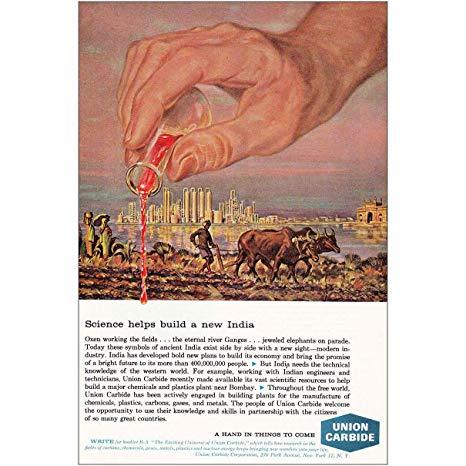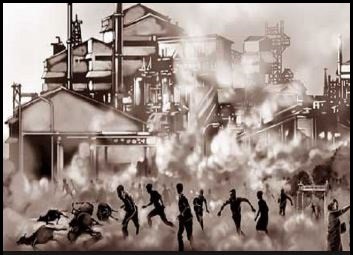The Bhopal Gas Disaster — The Worst Industrial Accident in HistoryIn 1969 the chemical company
The Bhopal Gas Disaster — The Worst Industrial Accident in HistoryIn 1969 the chemical company Union Carbide opened the Union Carbide India Limited (UCIL) plant in Bhopal, India, in the state of Madhya Pradesh. The plant specialized in producing pesticides for India’s growing modern agricultural sector. One important chemical for the production of the pesticides is Methyl Isocyanate (MIC), a highly toxic chemical which can cause skin burns, coughing,vomiting, dyspnea, pulmonary edema, emphysema, and in high doses asphyxiation. Since MIC was necessary for the production of pesticides, the plant had three large underground storage tanks full of the chemical.Maintenance and repair of infrastructure and systems at the UCIL plant was woefully poor, especially noted were a number of leaks found on pipes used to pump MIC to different tanks and locations. It is through one or many of these leaks that water infiltrated the pipes and entered the main MIC storage tanks. The mixture of the water and MIC caused a reaction resulting in a great amount of heat and pressure. On the night of December 2nd/3rd a worker noticed cracks forming on the concrete cap of the one of the tanks, signalling a heavy build-up of pressure. Workers scrambled to prevent the tanks from bursting by activating three safety backups. First the gas was to be pumped into refrigerated secondary tanks, however this system had been dismantled in order to save money. The next safety system involved the gas being released into the air, but filtered by an air scrubber which would remove all toxins before it was released into the environment. This system failed due to a malfunction. The last ditch safety system involved the gas being piped to a flare tower where it would be burned off, however this system was down due to maintenance.Finally the pressure in the storage tanks burst, releasing a massive invisible cloud of MCI around Bhopal. Warning alarms failed to sound in time, giving the people living near the plant no warning of the incoming cloud of death. Many people asphyxiated in their sleep. Other’s died in the streets right where they were standing. Hospitals were quickly overwhelmed by the injured and dying. Throughout the night 3,787 people died and between 500,000- 600,000 suffered injuries, of which 38,000 were serious injuries and 3,900 were permanently disabling injuries. Many of these injuries included severe burns, blindness, and severe respiratory injuries. Over the next week, another 8,000 would die due to related illnesses or injuries. Furthermore, what is almost impossible to account for are the thousands upon thousands of victims who would suffer long term effects and chronic illnesses as a result of exposure. Such chronic illnesses include emphysema, chronic obstructive pulmonary disease, neurological damage, chronic skin diseases, miscarriages, and birth defects. Likewise environmental and economic damage is practically incalculable. In 1986 the Bhopal Union Carbide India Limited plant was dismantled. In 1988 Union Carbide agreed to pay a settlement of $470 million to the Indian government. Due to Indian bureaucracy payments to individual victims has been slow, and many have yet to see any compensation. -- source link
Tumblr Blog : peashooter85.tumblr.com
#history#disaster#indian history#india#bhopal disaster#bhopal#industrial accidents#accidents#death

